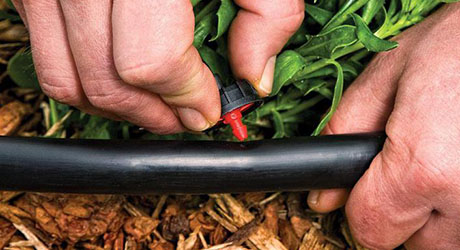Drip Irrigation
You choose how you live
It's time to start your new life
“Drip irrigation is a type of micro-irrigation system that has the potential to save water and nutrients by allowing water to drip slowly to the roots of plants, either from above the soil surface or buried below the surface. The goal is to place water directly into the root zone and minimize evaporation. Drip irrigation systems distribute water through a network of valves, pipes, tubing, and emitters. Depending on how well designed, installed, maintained, and operated it is, a drip irrigation system can be more efficient than other types of irrigation systems, such as surface irrigation or sprinkler irrigation.”
Primitive drip irrigation has been used in ancient China using a process of what we now called percolation. A very clever way of irrigation to save water and labor.
Modern plastic emitter in drip irrigation was was developed in Israel by Simcha Blass and his son Yeshayahu
Modern drip irrigation is a very important innovation in agriculture.
It saves a lot of water.
A major disadvantage is the high initial cost in labor.
But this disadvantage may be mitigated soon from further innovation.

Basically you do the following in garden drip irrigation
“Lay out a grid with hoses and emitters showing the plants you want to water and how far apart they are.
Each plant will get an emitter, a tiny sprinkler, for its own watering needs, and each emitter will be attached to the water source with a network of drip irrigation lines, 1/4- and 1/8-inch plastic tubing that runs from the main hose to your plants.
For continuous coverage, place emitters every 12 inches apart in sandy soil, 18 inches in loamy soil and 24 inches in clay soil.”
“Punch holes in the line for each emitter with emitter tool and place emitters in the desired location.
If plants to be irrigated are more than 1 foot away from the line, cut an appropriate length of 1/8-inch emitter tubing and attach the feeder line to the emitter on the branch line and then attach an emitter to the end of the feeder line.
Plug the ends of the individual lines with caps and secure with band clamps.”
If you are not familiar with these things, do your home work properly.
How to do it properly?
It is actually dependent on your lifestyle.
If your lifestyle needs to be changed, it may take a while.
Nevertheless, change it.
For the time being, you can take actions in good faith.